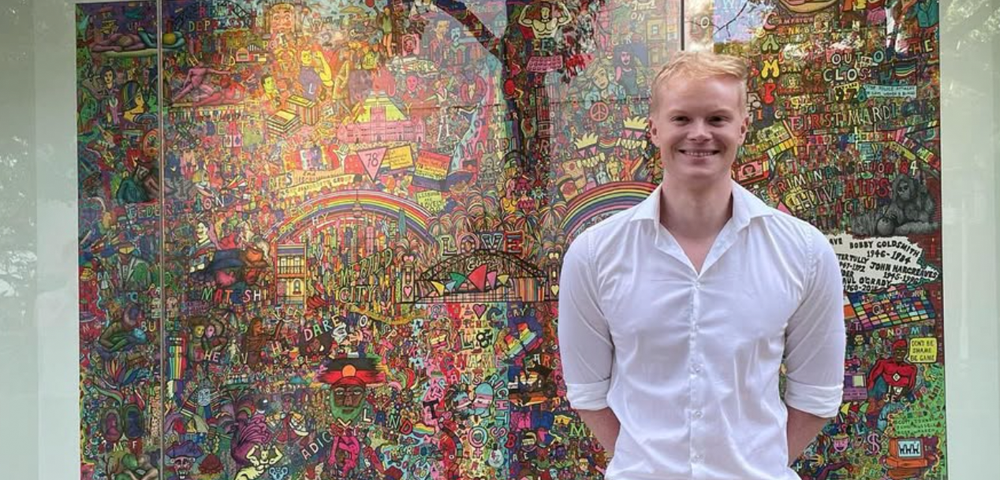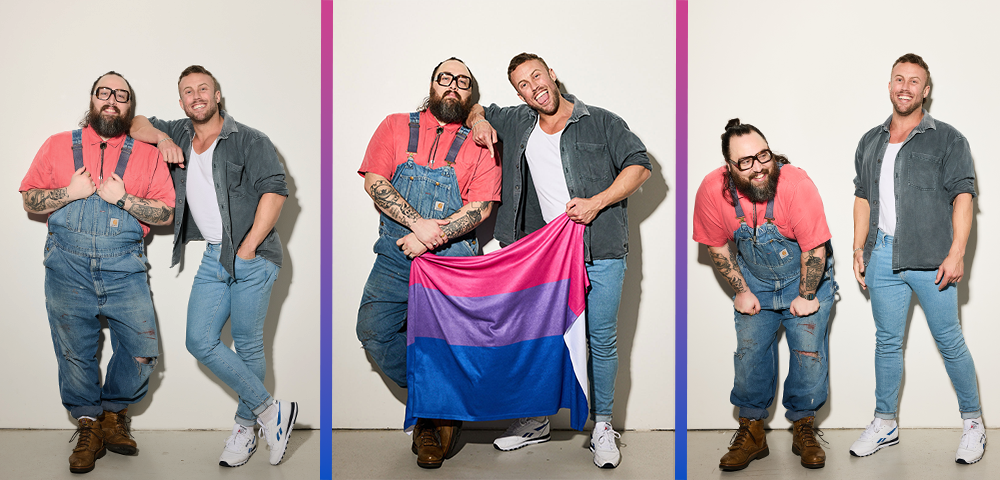
A new HIV prevention ad running in New York is not only dividing campaigners in the USA, it’s stirring up demands for a similar tougher approach here.
The dark and sinister video, complete with shock graphics and horror-movie voiceover, says:
“When you get HIV, it’s never just HIV. You’re at a higher risk to get dozens of other diseases – even if you take medications – like osteoporosis, a disease that dissolves your bones, and dementia, a condition that causes permanent memory loss. And you’re over 28 times more likely to get anal cancer. It’s never just HIV. Stay HIV free. Always use a condom.”
It’s meant to shock, and it does. And it’s also rekindled the argument about the value of shock tactics in campaign against HIV.
Online forums have been awash with ill-tempered and unpleasantly personal arguments over whether the recent reported increases in new infections, especially among younger men, justifies a move away from recent ‘softer’ prevention campaigns.
Larry Kramer, a long-term HIV survivor, founder of Act-Up and author of the semi-autobigraphical classic, A Normal Heart, is in no doubt.
“It’s about time,” he wrote in an e-mail. “This ad is honest and true and scary, all of which it should be. H.I.V. is scary, and all attempts to curtail it via lily-livered nicey-nicey ‘prevention’ tactics have failed.”
Dr. Monica Sweeney, assistant commissioner of New York’s bureau of H.I.V. prevention and control, said the ad had tested well with focus groups of the young target audience.
“One of the points they kept making is you need to hit hard and do something to counteract the pharmaceutical ads that say having H.I.V. is a walk in the park,” she said.
Some here agree, even going so far as calling for ACON to be disbanded for refusing to take an equally tough line.
Conventional wisdom in the AIDS prevention industry is that scare tactics, a) do not work and b) stigmatise those who already have the disease.
But these arguments are generally made by people who have lived and worked with HIV for a long time. What we are seeing is a rise in new infections among a whole new generation who have never been taught that H.I.V. is a disease to steer clear of. There has never been a fear-based campaign directed at them, and maybe it’s time there was.
Surely it’s far more important to protect the uninfected than the sensibilities of those already with the disease.
We don’t concerns ourselves as to whether graphic anti-smoking ads will upset people who already have cancer, or whether gory TAC ads will upset people already mutilated in road accidents – the important thing is to prevent these things from happening to anyone else.
Something even the victims themselves endorse.
It should be the same with HIV.










Don’t agree I think many of the Brisbane queens should get watch this, it’s out of control here, I have seen more barebacking than ever but also the attitude of oh get over it condoms are wrong.
Thanks for posting this, Doug. It’s a long overdue discussion. First, a couple of clarifying points: there haven’t been ‘calls’ for ACON to be defunded over this. There’s been one pretty predictable call that I’m aware of and to be clear, ACON hasn’t ‘refused’ to do anything. Given that this particular ad hasn’t been under active discussion in the three months since I’ve been here, this is necessarily my personal rather than an organisational view.
BTW, if as you say you don’t know what’s going on in NSW, you probably should – there’s some positive news to tell. It seems to me that there’s a general lack of gay media interest in examining what’s going on in gay men’s prevention in any detail and I think it’s a shame. I get that it’s not all that sexy and that media organisations are as cash-strapped as anyone else but still….
For what it’s worth, I’m all in favour of engaging, innovative prevention ads that give the facts in a clear, concise and effective way, but I don’t think that this ad does that. Sure, it’s designed to shock and get attention and it does that – unquestionably. I actually think that you’d probably get a bit of traction out of it for a few months – particularly among gay guys who are already morbidly fearful about HIV – until people realised that it’s dealing in worst case scenarios that probably won’t happen to them and then everyone would move on.
These ads surface from time to time in the US and then vanish without trace – of any evaluative impact, or cost benefit, or behaviour or notification rate change. To some extent they’re an artifact of – and a response to – the direct-to-patient advertising culture in the US where HIV Pharma companies run glossy ads featuring buff, ruddy-cheeked poz dudes scaling mountains on the great waves of life affirming energy offered by HIV antiretroviral therapy. They exaggerate the benefits of course but I don’t think that over-hyping the downside represents a significant improvement.
It seems to me that this is just the sort of ad you’d come up with if you thought that best way to resolve HIV transmission is for fags to keep their pants on and not get into that….stuff. The centrality of the graphically (deservedly?) diseased arse is surely not coincidental.
Rates of anal cancer are indeed around twice as high in poz gay men as they are in neg gay men (and of course poz gay men also tend to be an older, longer lived group which might have some bearing on that ) but it’s worth pointing out that rates in gay men generally – both poz and neg – are 2/3 times as high as they are in straight men. What sort of campaign approach might work here, I wonder?
The fact is that just about all sexually active gay men are infected with the HPV virus which leads to anal cancer but it’s by no means pre-determined or inevitable that any of us needs to develop it and with regular check ups and monitoring, most of us don’t and won’t.
And if young men were vaccinated against HPV, in the same way that young women now are, I reckon we’d see rates plummet pretty much in the future.
Rates of dementia are certainly higher also in PLHIV, but most people with HIV don’t and won’t have dementia – even those of my advanced years.
Ultimately I think this ad is just lazy. It’s an attempt to duck the undoubtedly harder ask that prevention now poses in an ever-evolving epidemic by reverting to the ‘magic bullet’ that diagnosis = death used to offer before effective therapy arrived on the scene.
But that moment has passed and it’s a good thing that it has. Prevention is more challenging in this environment but that’s the reality we have to deal with. We can’t wish it away.
No-one – least of all me – would deny that HIV is no picnic nor would I challenge the ad’s premise that HIV is often accompanied by a range of other co-morbidities. We do need to tell the truth about HIV but this ad doesn’t do that and spin is spin whichever way you play it.
If someone can show me some (in fact, any) evidence that this approach works effectively in gay men’s prevention – without further stigmatising or devaluing the lives of men who have fought bloody hard to have lives in many instances – then I’m happy to reconsider.
@Garrett: Thank you for clarifying, I’ll check it out.
I do think though we need to lay the paternalistic bogey man to bed though, dear. Cutbacks under the Kennett govt etc shouldn’t really be all it takes for the floodgates to re-open in Victoria. Safe sex awareness and responsibility shouldn’t rely on a continuous flow of ever-updated posters and pamphlets from the health dept. The idea, as you suggest, that the moment they begin to dwindle gay men forget all about safe sex and hiv rates subsequently surge is more alarming than anything in the NY ad at the head of this article.
I see no problem with explicitly showing the consequences of HIV – which are diseases nobody wants. After all, anti-smoking ads explicitly show the appalling consequences of smoking. And not too many people want to soften the anti-smoking message (and by the way, smoking kills more gays than AIDS).
HIV is a health problem the community aims to prevent. And it is crucial to show why HIV should not be acquired. Otherwise, nobody will take the problem seriously.
Doug, that statement is beneath you. It not only trivialises the issue ( we are talking about people’s mental health and wellbeing not their delicate ‘sensibilities’) but it misrepresents my original point.
I have not said that stigma is ‘more important’ than prevention, but that they need to be balanced against each other, and in the absence of any evidence at all that a scare campaign would actually decrease HIV incidence, as you so earnestly seem to believe it will, there is no justification for stigmatising PLHIV further than they already are.
So what are you saying Garrett? That there is an acceptable level of annual infection?
Surely one infection is too many?
And clearly, if there are still people getting HIV – because a stable infection rate is not a decreasing or non-existent one – then perhaps there is an argument that doing soft prevention messages only doesn’t work.
People are different and some process information differently. Perhaps it is time HIV orbs recognized this and acted accordingly instead of applying a one size fits all mentality
With an explosion of Hiv in the phillipines,80% of this towards Gay men,why shouldn’t alarm bells be ringing? I think the recent report spells it all in Black & White,thanxs
@Mark Just one small point – there has in fact been NO increase in HIV infections in NSW over the past decade. The national increases in infections that have been poorly reported by the media have in fact been due to increases in other states particularly in Victoria where the level of support for HIV prevention was cut back severely under the Kennett & Bracks governments. However, in the past couple of years that situation has also been changed with Victoria now providing considerably higher levels of support for HIV prevention and, indeed, the rates of infection in Victoria have leveled off during that time as well.
I think the problem with HIV prevention is there has been a large decrease in real funding over the years. This has correlated with a rise in HIV rates. If you do not fund HIV prevention properly, then of course there is a rise in HIV rates.
“over the past decade it is clear that gay men in NSW have been behaving in ways that have so far avoided a new rise in infections and they need to be commended for that, and their own efforts at preventing HIV transmission need to be acknowledged and encouraged. ”
unbelievable idiocy. hasn’t there been an INCREASE in new infections over the past few years?
in any case, any new infection is a disaster, given the DECADES we’ve had to try and cram the safe sex basics through our thick gay skulls.
Although Garrett Prestage is quite right that the consequences of getting HIV today are very different to 20 years ago, I am yet to meet anyone who thinks getting HIV would be OK.
Australia’s big scare campaign, The Grim Reaper, is often said to have been a success, however, while it was memorable, it did not work in reducing new HIV infections among gay men; infections continued for years following that campaign at rates much higher than today. What worked was a comprehensive evidence-based prevention program, and responsible actions by gay men living with HIV.
In any case, HIV is already stigmatised by the media, and just about anywhere else you care to look, so even if you wanted a scare campaign, there is no need to spend taxpayer’s dollars on a glossy campaign!
I remain unconvinced. I’m not at all sure all gay men “operate within a calculus of risk that balances risk with pleasure” once they’re off their faces and in the moment, especially the young ones, who, like all young men, are convinced they’re immortal and invincible. Like binge drinkers, hoon drivers, and hyped-up footballers. A bloody big scare might just cut deep enough to make them pause – and indications from TAC, tobacco and other ads are that it does.
There ARE indications that young gay men in Victoria are being more careless and having more unsafe sex, as the Burnett Institute recently reported http://www.theage.com.au/victoria/hiv-rate-rises-for-young-gay-men-20101212-18u16.html. I’m not aware of any up to date reports in NSW so can’t comment on that.
The evidence has been there in the US and Europe for some time and now it’s showing up in Victoria, so I don’t think we can afford to wait around and be complacent and say ‘it’s not like it is in the US’.
And I’m a bit nonplussed at what seems to be the suggestion that protecting the sensibilities of people living with the virus are somehow more important that protecting another generation from getting infected in the first place.
The underlying assumption here is that shock tactics will work – that by presenting a purposefully scary image of life with HIV people will change their behaviour. Unfortunately, there’s no reason to believe this will occur, and indeed numerous studies have shown that fear tactics are not effective in HIV education.
What we do know for sure is that campaigns like this stigmatise people living with HIV, and they negatively impact the self-esteem and mental health of those of us living with the virus. That is an impact that we can be certain a campaign like this would have, and that means we need to be very sure that it would have a positive impact outweighing that negative effect before contemplating it.
Fear tactics won’t work because most gay men already understand that sex is never entirely risk free and they operate within a calculus of risk that balances risk with pleasure. As Garrett has pointed out, we don’t have the same epidemic in Australia as they do in New York and, frankly, lying to gay men by telling them their arses will rot off if they don’t practice safe sex is just insulting.
Why scare people? Instead, we should make them aware of the risks and provide them with the tools and support needed to make good decisions for themselves.
Scaremongering and simplistic analysis are very unhelpful, as is the continual assumption in the local gay media that what is true in the US must also apply here. Larry Kramer’s statement as quoted in this article is simply untrue: ‘all attempts at … prevention … have failed’. Prevention has indeed often failed in those places where it has not been given adequate support to make it effective, such as in many populations in the US. However, the Australian experience is precisely the reverse: As bad as it was, we nonetheless successfully avoided the levels of HIV infection experienced in the US & elsewhere precisely because we had a partnership in Australia that ensured that prevention work was adequately supported. And more recently, in Sydney we have avoided the rise in infections experienced among other populations of gay men around the world because we have been able to maintain a level of support for prevention work here in NSW that was not often found elsewhere. Honest, factual information is required for gay men to make sensible decisions about safe sex – but they need to know that they can believe the information they are being given. Attempts to terrify them into submission are neither respectful nor honest, and ultimately undermine the credibility of the information. The consequences of an HIV infection in Australia are not at all the same as they were 20 years ago, and we should not pretend they are. However, that does not mean that everything is now easy or that HIV is no longer something to avoid, and we need to ensure that information is provided to gay men. Over the past decade it is clear that gay men in NSW have been behaving in ways that have so far avoided a new rise in infections and they need to be commended for that, and their own efforts at preventing HIV transmission need to be acknowledged and encouraged. Beating them over the head with messages that suggest they are bad people and doing something wrong would seem highly counter-productive and inappropriate.
I for one, am totally in favor of more graphic ads to help prevent the increase in HIV.
One of the problems as I see it is, ACON and other similar organisations straddle the fence on HIV and AIDS.
On the one hand they are taking a large sum from the government (and us the tax payers) to try to tell us that ‘HIV is bad and you don’t want to get it’…. but with the other hand they are taking a large sum of money from the government to look after people who have recently sero-converted and because of this they also have to say ‘HIV isn’t so bad’. Mixed messages if I’ve ever heard it.
One of the things I’ve learn’t working in advertising is, you need a strong, focused message. None of the campaigns I’ve seen in the last 10 years meet that criteria.
All of these organisations are just trying to ‘have their cake and eat it too’.
What we actually need is evidence based health promotion and education. Random proclamations generalising about the level of sexual health education, awareness of HIV and life experiences of younger people is just dross which gets in the way of reality-based conversations about safer sex and the experience of living with HIV.
No, God no!
We need a whole of community approach, not just the gay glitterati community, but a WHOLE of community approach.
We need to engage and empower our young people, we need to make sure that we do not allow HIV/AIDS to take a foothold in our Aboriginal and Torres Strait Islander communities, that we work with sex workers and injecting drug users effectively.
The graphic imagery and advertisements used to promote smoking cessation and road safety have lost their lustre and people just switch off. This won’t work, it will just further demonise those infected.